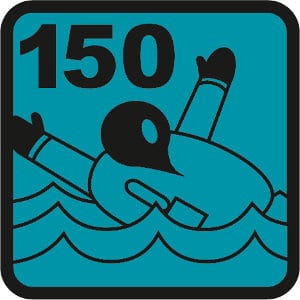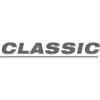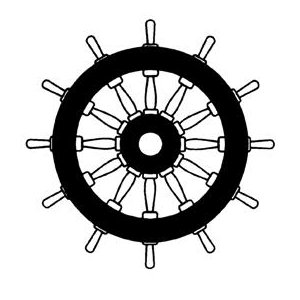Lifejackets need a service too
Where the safety of peoples’ lives is concerned, regular inspection of the equipment concerned is absolutely essential. This also applies to lifejackets. Natural aging process can influence the properties of the material and also the functioning of the automatic inflator system is not immune to possible damage (among other things operational errors). In other words: the life of a lifejacket must be limited. The corresponding time frame has been set at 10 years, a decision borne authoritatively by the members of the German Association for Sea Rescue Equipment (FSR), and which complies with the law of safety and product liability.
A prerequisite for this lifetime is an inspection of the lifejacket by an authorized servicing station or the manufacturer at least every two years.
Safety as a visible sign
Regular inspection is documented by the FSR-Service-Sticker, which, similarly to a car’s MOT sticker, signalizes the month and year of the next service due.
Servicing
The regular system check by the expert comprises testing the buoyancy chamber for air leaks as well as a scrutinizing check of the fully automatic inflation system. Moreover, within the framework of this SERVICE we can offer:
- Repair
Removal of any defects discovered in the course of the inspection as well as replacement of the complete protective cover or buoyancy chamber. - Conversion / Optional extras
Converting from manual release to automatic inflation, adding a spray hood, installation of an emergency light and further signalling accessories.
Receipt of the new FSR-Service-Sticker confirms, so to speak, the correct functioning of the rescue equipment and always reminds you of the Date of the next inspection, the sticker being clearly visible from the outside.
The automatic life jacket GOLF 150 SOLAS is characterized by its compact design and the patented double-chamber system, which complies with the current SOLAS regulations. Suitable for heavy duty industrial use in coastal or inshore areas.
The protective cover is made of a robust polyester fabric with reflective stripes for better visibility. The click closure allows the lifejacket to be put
on and taken off quickly, even when wearing gloves.
Buoyancy body and protective cover can be separated from each other, so that individual parts can be replaced when worn. The back and side
straps can be adjusted to fit the wearer.
The life jacket offers additional safety with a double-chamber system: In an emergency, the upper chamber automatically fills with CO2 gas and
provides 275 Newtons of buoyancy. In case the first chamber becomes damaged, a reserve chamber can be inflated manually and ensures full
replacement.
| Modell | GOLF 150 SOLAS |
| Buoyancy class | 150 N (ISO 12402) |
| Approval | SOLAS |
| Type of buoyancy | inflatable |
| Inflation technology | SECUMATIC 3001S and manual inflator 301 SM |
| Real buoyancy | 165 N |
| CO2 cartridge | 2 x 32 g |
| Buoyancy chamber system | CLASSIC bright yellow, twin chamber membrane technology, overpressure valve |
| Standard equipment | mouth valve, whistle |
| Color | blue |
| Harness | no |
| Closure | front click buckle |
| Back part | back strap |
| Crotch strap | optional |
| Recovery belt | yes |




_www.noah.com.sg-74x74.jpg)









